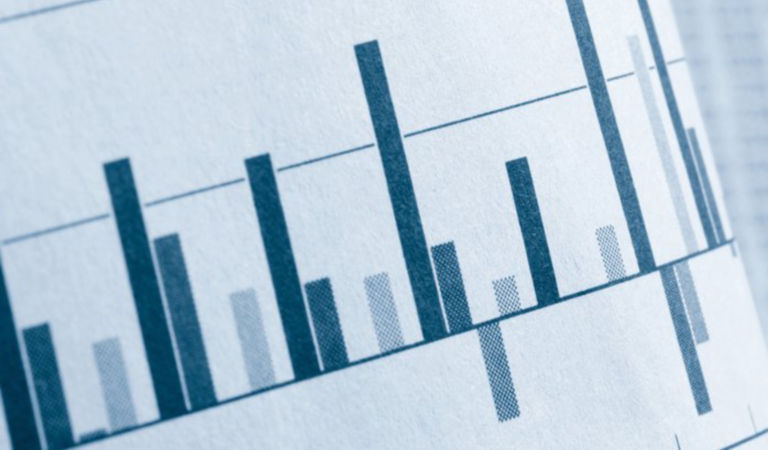Equities
Global equities (-4.7%) declined in December, ending the month with a 15.6% loss year to date. Market sentiment was dented by anxiety about tighter central bank policies amid weakening global economic growth and cautious corporate commentary that added to signs of recession. By contrast, investors were encouraged by milder inflation, which provided greater scope for some major central banks to slow their pace of interest-rate hikes. Chinese equities continued to rise on the back of the country’s COVID pivot, as mass testing, lockdowns, and quarantine for international travelers were scrapped. However, the transition away from strict pandemic measures is expected to be challenging amid soaring COVID infections that are severely straining the health care system and the economy. The Bank of Japan (BOJ) surprised markets by unexpectedly tweaking its yield curve control (YCC) policy, allowing long-term interest rates to rise to ease some of the costs of prolonged monetary stimulus and pave the way for policy normalization. European Union (EU) member states agreed to a cap on natural gas prices, following months of debate over whether the measure will protect European households and businesses from extreme price spikes as temperatures plummet. The G7, Australia, and the EU set a US$60 a barrel price cap on Russian seaborne oil, and Russia retaliated by banning the sale of its oil and petroleum products to countries that impose the cap.
US
US equities (-5.8%) ended sharply lower as recession potential and downside earnings risks weighed on market sentiment. The US Federal Reserve (Fed) slowed its pace of rate hikes by lifting its benchmark interest rate by 50 basis points (bps), to a target range of 4.25% – 4.5%, amid modest growth in spending and production and a series of economic data points that showed inflation is ebbing. However, the Fed’s Summary of Economic Projections indicated a more hawkish outlook compared to its September forecast, with policymakers anticipating inflation will remain elevated for longer and interest rates will peak at 5.1% in 2023, according to the Fed’s median dot-plot projection. This contrasted with financial market expectations for a terminal rate in the 4.75% – 5.0% range, reflecting beliefs that slowing economic growth and moderating inflation could force the Fed to moderate its stance. US consumer prices in November rose less than expected for the second straight month. The headline Consumer Price Index grew 7.1% from a year earlier (6.0% at the core level), down from a headline rate of 7.7% (6.3% core) in October, marking the smallest increase in inflation for almost a year. Despite stiff opposition from conservative legislators, the US House of Representatives passed a massive US$1.7 trillion bill to fund the government through September 30, including a record US$800 billion of domestic spending — a 9.3% increase from last year’s level.
Economic data released in December provided more evidence that tighter financial conditions constrained the US economy. The labor market remained resilient in November. Nonfarm payrolls grew by 263,000, commensurate with the robust pace of job growth over the previous three months, which averaged 282,000. The unemployment rate held at 3.7% as competition for a limited pool of employees drove up average hourly earnings by 5.1% annually, significantly above the pre-pandemic pace of approximately 3%. Consumer spending waned more than expected in November; retail sales surprisingly fell by 0.6% — the largest decline of the year — while personal spending rose only 0.1%, a sharp pullback from October’s outsized gain of 0.9%. Households continued to spend more on services but trimmed their outlays on goods. The Personal Consumption Expenditures Price Index — the Fed’s preferred measure of inflation — rose 5.5% year over year in November, down from 6.1% in the prior month. Improving views of the economy and softening inflation lifted the Conference Board’s Consumer Confidence Index to 108.3 in December, markedly above forecasts of 101. Housing market activity remained depressed in November; single-family home building and permits tumbled, pending home sales dropped for the sixth straight month, and existing-home sales slid 7.7% (down 35% from a year earlier). Housing inventory remained scarce, helping to keep prices elevated.
Softer measures of demand, production, and employment pushed the Institute of Supply Management (ISM) Manufacturing Index down to 49.0 in November, indicating that the manufacturing sector contracted for the first time since May 2020. In contrast, expansion in the services sector unexpectedly accelerated in November, with the ISM Services Index rebounding to 56.5, well above consensus estimates of 53.3. The holiday season contributed to stronger business activity and higher employment, and companies noted better supply-chain and logistics performance. A separate preliminary survey from S&P Global signaled that output in the services and manufacturing sectors declined at a faster pace in December, although inflation pressures subsided. The National Federation of Independent Businesses Small Business Optimism Index improved modestly to 91.9 in November but remained well below the historical average of 98 amid ongoing concerns about inflation and labor shortages.
All 11 sectors in the S&P 500 Index (-5.8%) posted negative results. Consumer discretionary (-11.3%) was the worst-performing sector, driven by automobiles (-33.1%) and internet & direct marketing retail (-12.8%). Information technology (-8.4%) was another notable underperformer, led lower by semiconductors & semiconductor equipment (-9.9%). Communication services (-7.8%) fell, most notably interactive media & services (-9.9%). Utilities (-0.5%) was the top-performing sector, proving to be resilient in a challenging environment.
Europe
European equities (-2.7%) finished in negative territory, registering their worst yearly performance since 2018. Markets were cautious about the economic outlook amid the cost-of-living crisis due to the war in Ukraine, tighter financial conditions, and high inflation. However, investors gained some impetus from moderating inflation, a slower pace of interest-rate hikes by the European Central Bank (ECB), and the view that the region’s economic downturn may not be as severe as initially feared. Annual eurozone inflation receded from a peak of 10.5% in October, to 10.1% in November, and economists predicted that price pressures would recede further in December. The ECB forecast a relatively short and shallow recession, easing its pace of interest-rate hikes to 50 bps, in line with hikes by the Fed, the Bank of England, and the Swiss National Bank. The bank also outlined plans for quantitative tightening to begin in March as it seeks to reduce liquidity in the financial system and allow long-term borrowing costs to rise.
Europe’s energy crisis saw some relief as natural gas storage volumes were 10% above normal, thanks to liquefied natural gas (LNG) imports and warmer-than-average temperatures. EU countries agreed to a cap on Russian oil prices of US$60 per barrel, while EU energy ministers agreed on a gas price cap to alleviate the impact of the energy crisis. Nevertheless, sky-high energy and food prices eroded consumers’ purchasing power. A trade conflict simmered between the EU and the US, as key provisions of the US Inflation Reduction Act, which take effect in January, feature subsidies that favor the clean-energy technologies of American manufacturers at the expense of their European counterparts. Markets were concerned that the protectionist measures could exacerbate European inflation, while the EU argued that they violate free-trade principals as it worked toward a centralized European response.
Macroeconomic data provided evidence that the eurozone economy continued to stabilize, signaling that Europe may have reached the trough of its downturn. Improving global supply chains, softening inflation pressures, and a less severe energy crisis lifted the eurozone Manufacturing Purchasing Managers’ Index (PMI) to a three-month high of 47.8 in December, up from 47.1 in November, indicating a slower pace of contraction. The preliminary eurozone Composite PMI for December showed that the services sector contracted at a more moderate rate. A preliminary estimate of eurozone consumer confidence rose for the third straight month, increasing by 1.7 points in December to -22.2, suggesting that lower energy prices and governments’ relief packages helped to mitigate the ongoing cost-of-living crisis.
The UK (-1.4%) ended lower but outperformed its European peers thanks to greater exposures to commodity producers and defensive consumer staples, while a weaker British pound benefited many UK companies. However, economic data was weak as the UK economy contracted at a faster-than-expected pace in the third quarter. The manufacturing PMI sank to 45.3 in December — one of the lowest readings since May 2009.
Pacific Basin
Pacific Basin equities (-3.5%) finished lower. In Japan (-5.2%), the BOJ left its benchmark lending rates unchanged but surprised markets by raising the yield cap on its 10-year bonds, causing the yen to rise and government bond prices to fall. The decision was viewed as a step toward policy normalization after nearly a decade of central bank stimulus and allows yields to fluctuate 50 bps around the 0% target, up from the previous cap of 25 bps. Core inflation in November exceeded the BOJ’s target of 2% for the eighth consecutive month, rising 3.7% year over year to the highest level since 1981. The rapid rise in inflation amplified pressure on the government and companies to address lackluster wage growth, which has remained just under 2%. Lower overseas demand drove factory output below pre-pandemic levels as industrial production in November fell for a third-straight month, although the 0.1% decline was significantly less than the 3.2% drop in October. Furthermore, the BOJ’s Tankan survey showed that sentiment among manufacturers in the fourth quarter was increasingly downbeat amid the rising costs of living and a slowdown in the global economy. Japan’s third-quarter GDP contracted at a less-than-expected annualized rate of 0.8%, with markets anticipating the economy to grow in the fourth quarter amid the government’s more relaxed COVID stance, border reopening, and ebbing supply-chain disruptions.
In Australia (-3.2%), the Reserve Bank of Australia (RBA) raised interest rates by 25 bps to a 10-year high of 3.1%, signaling further tightening ahead. Australian consumer sentiment in December improved from a two-and-a-half year low, although households remained very pessimistic by historical standards, citing inflation as the key concern. Business confidence turned negative for the first time this year as rising interest rates hampered the outlook. The labor market remained extremely tight. Employment surged by 64,000 in November, vastly surpassing consensus forecasts for a 19,000 increase; the participation rate climbed to 66.8%, matching a record; and the unemployment rate held at 3.4%. Powered by strong consumption and rising imports, GDP grew 0.6% in the third quarter (5.9% annually), slightly below expectations and down from a second-quarter gain of 0.9%.
In Hong Kong (+8.1%), equities sharply advanced after the city scrapped more COVID restrictions and announced its intent to reopen its borders with China before mid-January, in an effort to reinstate pre-COVID cross-border travel. In November, a slump in China’s economy and worsening global demand drove Hong Kong’s exports to their lowest level in nearly seven decades. Exports to mainland China dropped 29.7% year over year, far worse than October’s drop of 12.9%, while overseas shipments plunged 24.1%, the largest decline since 1954. In New Zealand (+0.5%), GDP grew 2.0% in the third quarter — more than double consensus forecasts — bringing the year-over-year growth rate to 6.4%. The result was much higher than the central bank forecast, underscoring the challenge of curbing demand to bring down inflation.
Emerging Markets
Emerging markets (EM) equities (-1.9%) declined as markets grappled with an uncertain global economic outlook against a backdrop of heightened geopolitical tensions and elevated inflation. Within EM, Asia outperformed Europe, the Middle East, and Africa (EMEA) and Latin America.
Asian equities (-1.5%) edged lower. Declines in South Korea (-8.8%), Taiwan (-5.9%), and Indonesia (-5.5%) were mitigated by strength in China (+4.8%). South Korea’s industrial production was hindered by lower technology exports, and the country’s finance minister pledged to expedite fiscal spending in the first half of 2023 in response to a weaker economic outlook. Taiwan implemented new mandatory military requirements for citizens amid threatening military drills from China, while the government indicated that it would inject US$12.4 billion of tax revenue into the economy in 2023 to bolster the island against global economic shocks. Chinese equities continued to rise in December as stringent pandemic restrictions were rapidly unwound. Markets anticipated that China’s COVID pivot would sharply boost economic activity, but the transition and the attendant surge in COVID case counts is exerting significant strains on the country’s health care system, domestic spending, and economy, and could prompt a spike in inflation. The Chinese government guided expectations for a more growth-friendly policy environment in 2023, setting an optimistic economic growth target of 5% in 2023. India’s (-4.0%) elevated trade deficit softened amid lower oil and commodity import prices. The Reserve Bank of India raised its policy rate by a more modest 35 bps in December after three consecutive 50 bps rate hikes.
EMEA (-3.5%) fell as Eastern European nations continued to combat the impacts of the war in Ukraine and elevated inflation. In Saudi Arabia (-3.4%), Crown Prince Mohammed bin Salman met with Chinese President Xi Jinping. The meeting signified heightened cooperation with the east, while suggesting autonomy from the west. In South Africa (-3.8%), President Cyril Ramaphosa won a second term as leader of the country’s governing African National Congress, positioning him as the front-runner in the presidential race in 2024.
Latin American equities (-3.8%) slid lower. In Brazil (-2.5%), economic growth forecasts for 2023 were cut due to high interest rates, fiscal uncertainty, and a weaker global economy. Interest rates remained steady, but the central bank stressed concerns about incoming President Luiz Inácio Lula da Silva’s fiscal spending plans, which could pressure inflation and increase the government’s borrowing costs. The broader region continued to struggle with high inflation, prompting central banks in Colombia (+8.3%), Mexico (-6.2%), and Peru (-8.3%) to raise interest rates in December. In Colombia (+8.3%), central bank Governor Leonardo Villar announced that the rate-hiking cycle was nearing an end, with policy rates set at 12%. Political turmoil in Peru (-8.3%) led equities lower. Dina Boluarte became the country’s first female president after former President Pedro Castillo was arrested for attempting to form a coup.
Fixed Income
Most global sovereign yields rose on hawkish rhetoric from major central banks, even as inflation receded from elevated levels. Most fixed income sectors outperformed government bonds amid a spate of easing inflation headlines and Fed rhetoric aimed at softening the expected pace of interest-rate increases.
US economic data showed positive momentum, underpinned by improved consumer confidence amid decelerating inflation and a solid labor market. Annualized GDP growth in the third quarter beat consensus estimates, personal income rose more than expected, while spending fell short of forecasts. Headline and core inflation eased as price declines for used cars, gas, and airfares more than offset higher services costs. The unemployment rate steadied. Nonfarm payrolls gained more than estimated, led by leisure, hospitality, health care, and government sectors. Manufacturing and services PMIs moved deeper into contraction, owing to a significant drop in new orders as demand waned. Declines in mining and manufacturing activity dragged down industrial production, while utilities output rose as colder-than-usual weather lifted demand for heating. Housing data largely weakened. The eurozone manufacturing PMI remained in contraction amid weak domestic and global demand. Germany’s ifo Business Climate Index exceeded expectations as fears around the gas crisis and supply-chain bottlenecks eased. UK manufacturing slowed more than forecast, with soft demand dampening order growth. China’s industrial production and retail sales lagged amid COVID disruptions. Japan’s industrial production and retail sales shrank, due to cooling demand and inflation pressures. Australia’s GDP growth trailed estimates in the third quarter as higher interest rates sapped consumer spending power. Canadian consumer confidence improved slightly.
Most major central banks continued to raise interest rates. The Fed hiked rates by 50 bps and signaled a higher-for-longer terminal rate. The ECB announced the start of quantitative tightening in March 2023 and the Bank of Canada stated it is “considering” future rate hikes, with both banks raising rates by 50 bps. The Bank of England and Norway’s Norges Bank hiked rates by 50 bps, while the RBA lifted rates by 25 bps. The BOJ widened its YCC range.
Most global sovereign yields rose on hawkish rhetoric from major central banks, even as inflation receded from highly elevated levels. In the US, the yield curve steepened, led by an increase in long-end yields. In Europe, the ECB’s hawkish rhetoric suggested that it expects to raise rates for an extended period, triggering a sharp sell-off across eurozone rates markets. The 10-year Japanese government bond yield surged following the BOJ’s change to its YCC policy but partially retraced after the bank conducted unscheduled bond purchases. The Bloomberg TIPS index delivered a total return of -1.02%, and the 10-year breakeven inflation rate decreased by 7 bps to 2.30% during the month.
Global credit bonds outperformed duration-equivalent government bonds as spreads tightened. Within the securitized sectors, agency mortgage-backed securities, commercial mortgage-backed securities, and asset-backed securities outperformed duration-equivalent government bonds. Within EM, local markets debt (+2.16%) outperformed external debt (+0.33%), in US-dollar terms. Spread narrowing contributed favorably to results within external debt, while movement in US Treasury yields had a negative impact. Appreciation of EM currencies drove positive performance in local markets, and movement in EM rates also helped results.
Currencies
The US dollar declined versus most major currencies. The Japanese yen gained following a sooner-than-anticipated change to the BOJ’s YCC policy, which was widely perceived as a step toward softening the bank’s ultra-loose monetary policy stance. The BOJ widened its YCC range and increased the amount of bonds that it will regularly purchase in the first quarter of 2003 to mitigate the potential surge in yields. The euro benefited from persistently hawkish ECB rhetoric amid broader signs of peaking inflation and stabilizing economic growth in the eurozone. EM currencies ended mixed. Most Asian currencies in EM (Chinese yuan, South Korean won) rallied on optimism about China’s economic reopening and the unwinding of its strict COVID controls. In Latin America, the Chilean peso gained, while the Brazilian real, Mexican peso, and Colombian peso declined.
Commodities
Commodities (-1.4%) declined despite only one of the four commodity sectors generating negative returns. Energy (-3.4%) continued to trend lower in December. Gasoline (+3.7%) rose on an unexpectedly large drop in supplies. Crude oil (-0.7%) slipped amid thin liquidity, as investors assessed China’s reopening against the fallout from Russia’s ban on oil exports to countries that impose a price cap on Russian oil, dragging heating oil (-0.8%) and gas oil (-1.6%) lower. US natural gas (-33.5%) fell sharply, with the National Oceanic and Atmospheric Administration projecting a high probability of above-average temperatures across the eastern and central US.
Industrial metals (+0.8%) generated modest gains. Nickel (+11.4%) surged, driven by the dismantling of Chinese COVID policies and exacerbated by incredibly low liquidity. Lead (+6.0%) rallied amid historically low inventories, as withdrawals from London Metal Exchange warehouses rose to a two-month high. Copper (+1.9%) advanced after China’s government signaled a pro-growth stance in 2023, hinting at business-friendly policies and more support for the property market. Zinc (-1.4%) ended lower on unfavorable demand and supply dynamics. A decline in aluminum (-4.3%) was likely driven by soaring COVID cases in China, which dented the near-term consumption outlook. Chinese imports of the metal dropped in November as supplies rose.
Precious metals (+4.8%) was the best-performing sector. Silver (+10.8%) and gold (+4.1%) climbed as China curbed pandemic controls and as cooler-than-expected US inflation during the quarter led to a slower pace of rate hikes by the Fed and a decline in the US dollar. Additionally, the BOJ’s unexpected YCC policy decision rattled markets, prompting higher demand for perceived safe-haven assets like gold and silver.
Agriculture & livestock (+1.8%) ended higher. Cocoa (+4.5%) was the top performer, bolstered by supply concerns amid reports of potential crop disease in some West African growing areas. Soybeans (+3.8%) extended recent gains, largely driven by positive demand expectations in China and growing concerns about the lack of rainfall in parts of South America. Lean hogs (+3.1%) advanced after the US Department of Agriculture’s quarterly report showed a smaller US herd compared to last year. Feeder cattle (+2.6%) and live cattle (+1.8%) prices were supported by smaller herds and the impact of cold weather on cattle weights. Corn (+2.1%) rose during the period, largely driven by persistently dry weather in Argentina, anticipation of a demand rebound in China, and disruptions to Ukraine shipping as a result of the war. Sugar (+2.5%) rose to its highest level in more than five years on lingering supply concerns in top-exporting nations, while demand remained strong. Wheat (-0.4%) slipped as traders assessed the outlook for record Russian exports in the first half of 2023 and reports of record shipments from Western Australia in December. Cotton (-1.1%) prices fell after data showed the largest purchase cancellation by Chinese buyers of US cotton in a decade, signaling significant demand headwinds. Coffee (-1.2%) moved lower on signs of slowing demand and weakness in the currencies of key suppliers, which incentivized top exporters to lock in prices ahead of new crops.

























Monthly Market Review — September 2025
Continue readingBy